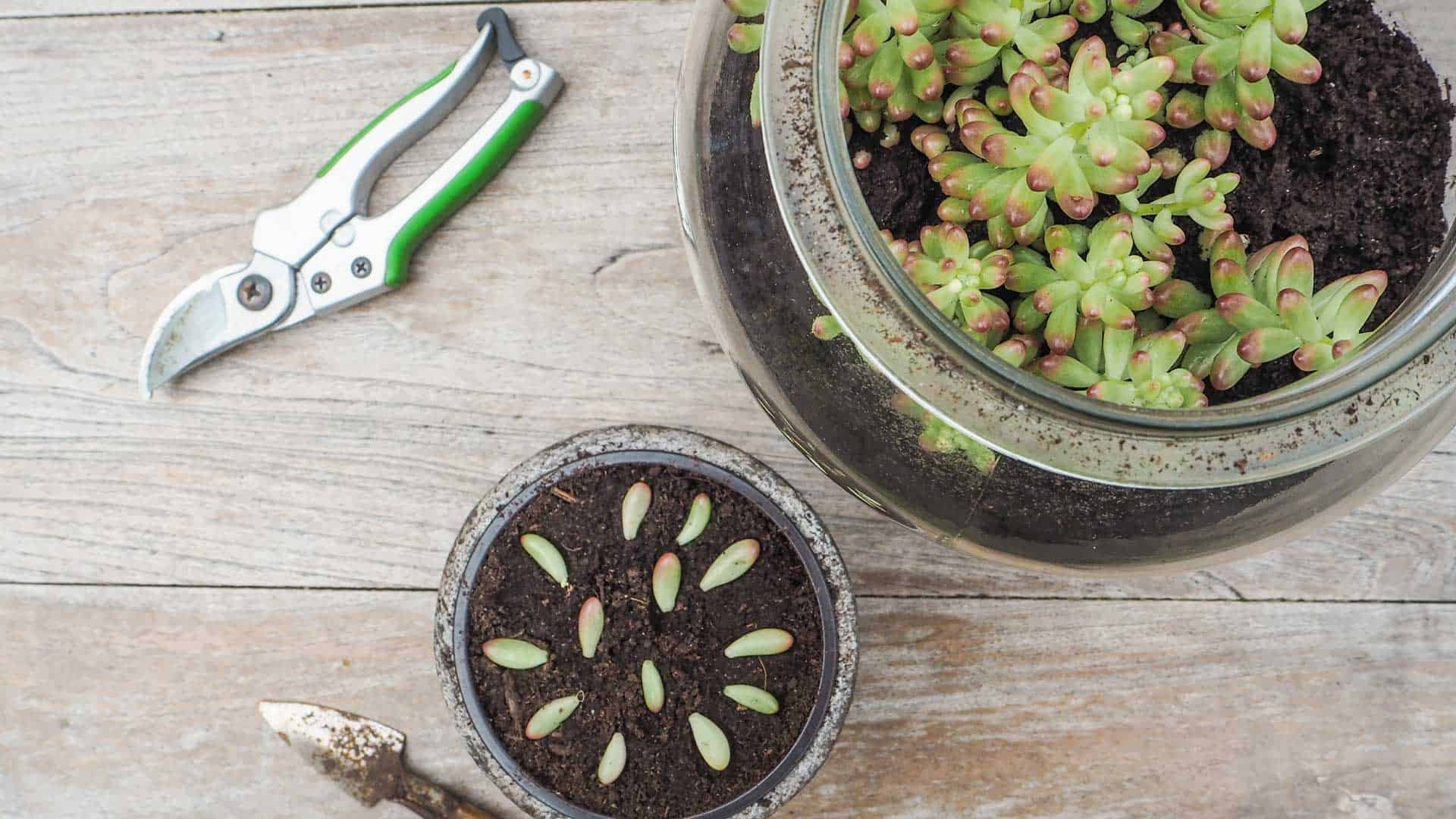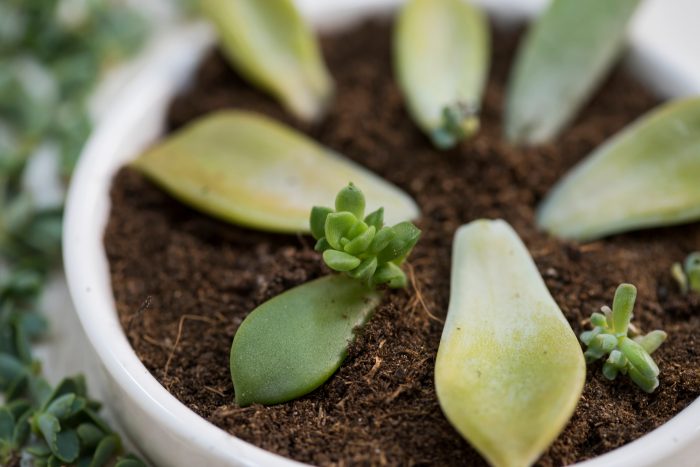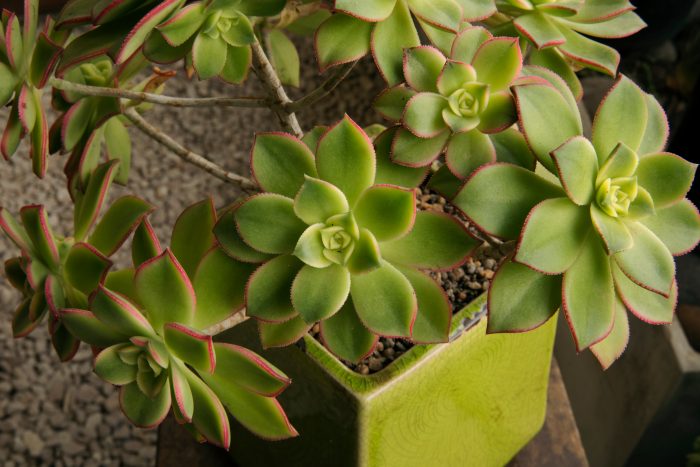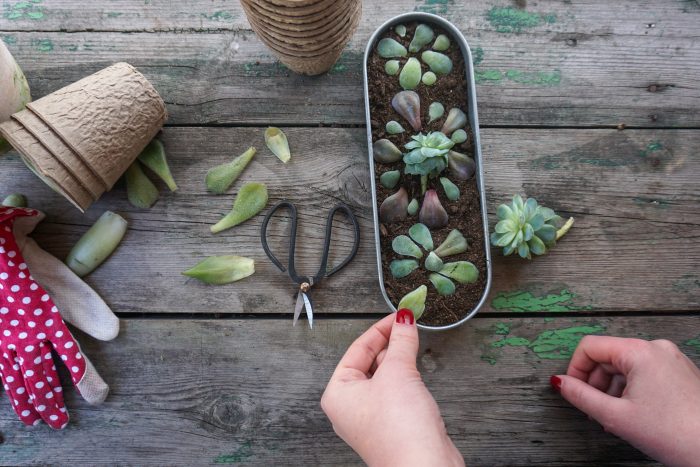Cacti and succulents (also called succulents) are not only charming additions to your houseplant collection, but they are also some of the easiest plants to take cuttings. For those who don’t know, cutting is the process of creating new plants from parts of an existing plant. This propagation technique is therefore an effective way to green your home at a low cost and to invigorate your cacti and succulents which stretch to reach the light. In this article, we will guide you through the essential steps to successfully take cuttings of your favorite varieties.
When to take cuttings from your cacti and succulents?
Although these plants can be propagated throughout the year, the best time to take cuttings for cacti and succulents is spring, at the end of the hibernation period.
Which parts to use?
Most cacti and succulents propagate easily, but to do so they first need to be taken from cuttings. Please note that there are several ways to take cuttings depending on the plant varieties chosen. Cuttings can be done by cutting a single leaf from the mother plant, by taking a segment of its stem, or by using one of its seedlings.
>> Leaf cutting
This cutting technique is certainly the easiest and simplest to carry out. It consists of recovering a naturally fallen leaf or detaching one from the base of the stem.
Leaf cuttings work very well with the following varieties:
- Crassula
- Echeveria
- Sedum
- Sansevieria
- All other varieties whose leaves are thick and easily detach from the stem.
>> Stem cutting
Just as simple, cutting from a segment of the stem consists of cutting a fairly vigorous part of the stem (bearing at least two leaves) to a length of approximately 10 to 15 cm (4 to 6 in.) near the trunk and strip it of its leaves at the base for 5 to 10 cm.
Stem cuttings are ideal for the following varieties:
- Thin stem cactus (Rhipsalis or epiphyllum)
- Aeonium
- Kalanchoe
- All other varieties with fleshy stems and leaves.
How to Take Cuttings from Cacti and Succulents – Step by Step
Before you start taking your cactus and succulent plant cuttings, make sure you have the necessary materials on hand:
- Containers with drainage holes
- A bag of potting soil for cacti and succulents
- A sharp knife
- A spray bottle of water
Once you have gathered your materials, follow the eight steps below.
- First, choose a perfectly healthy mother plant of course that you like. The leaves should have a uniform, unblemished color. They must be thick, firm, and without tears. This will increase your chances of success.
- Depending on the type of cutting chosen, delicately cut leaves or a stem using a sharp knife and leave them to dry in the sun for between 2 to 7 days depending on the size of the stem and/or leaves until the tip (attached to the stem initially) is completely dried out and crusted.
- Meanwhile, fill a container with potting soil for cacti and succulents. Composed mainly of sphagnum peat and sand, this soil is ideal for multiplying your cacti and succulents.
- Once they are dry, place your cuttings on potting soil, with the cut end touching the earth, without pressing it too far. For stem cuttings, plant about 2 cm of the stem in the potting soil and no more to avoid causing it to rot.
- Then place them near a window without direct sunlight to avoid wilting your cactus cuttings and succulents. Young plants need light and a little heat to promote their growth.
- Spray the surface of the potting soil every two days – without soaking it. You should see roots appear after a few weeks. Be sure to let the soil dry out sufficiently between waterings.
- Continue this technique until a new plant grows. Be patient! Your cuttings need time to become well established. No need to cover your cuttings with a plastic dome (mini-greenhouse); this could create too much humidity and cause them to rot.
- Report the new plants! After 4 weeks, once the roots are well established (2 to 3 cm at least), place your new plants in larger pots. Continue to moisten the soil regularly to encourage growth. After a few weeks, your young plants will be strong enough, so that when you lift them, the root ball will follow. Mission accomplished!
What to do if some cuttings never root?
You love cacti and succulents, but you don’t want to spend a fortune. Did you know that it was possible and quite simple to divide them to get even more? Indeed, if your cacti or succulents are stretching to reach the light or seem sick, propagating (or reproducing) your favorite plants can be a good way to reinvigorate them.
In case your cuttings don’t root or die along the way, don’t get discouraged, and just try again! Please note that certain varieties such as stone plants or euphorbias, for example, cannot be propagated by cuttings. They must therefore be multiplied by sowing.











